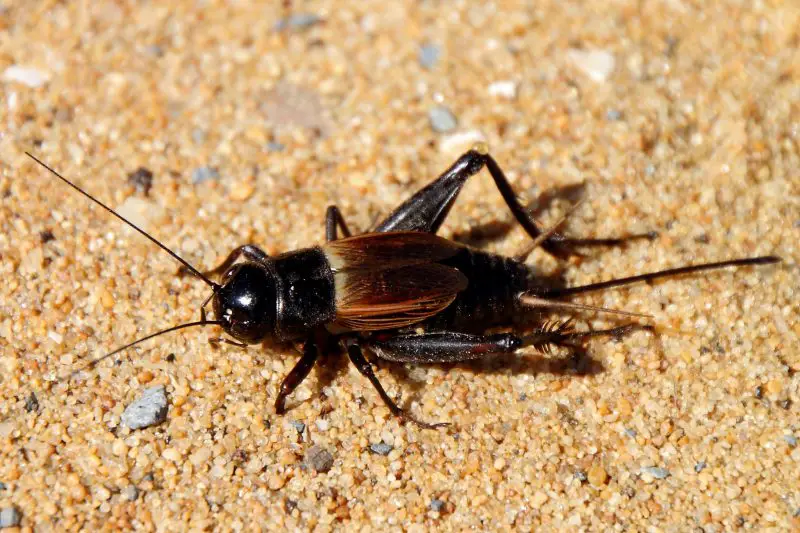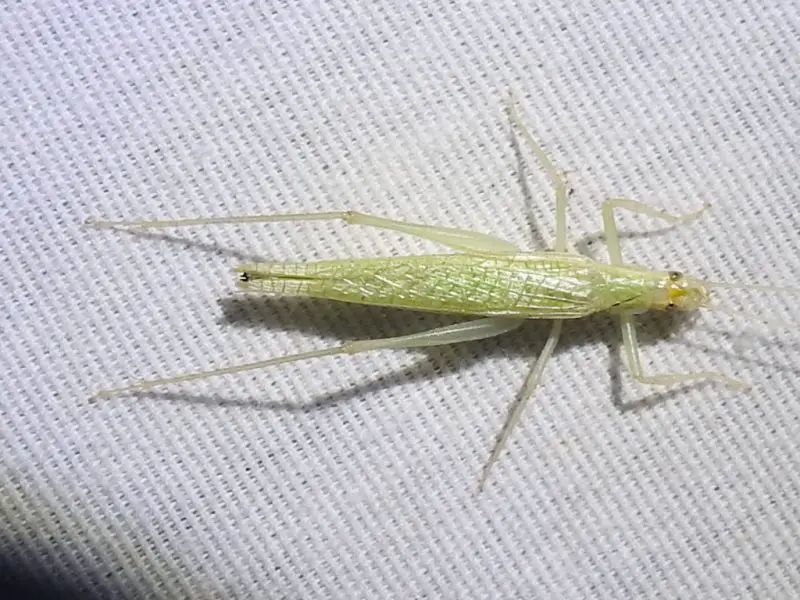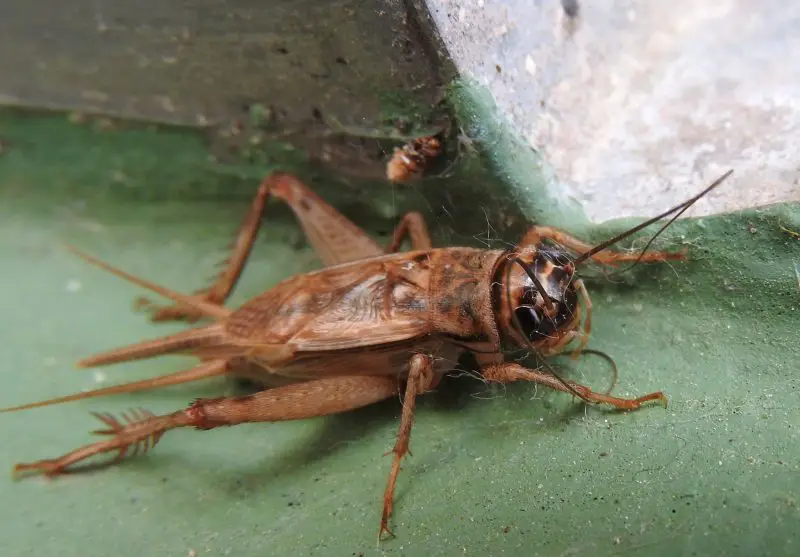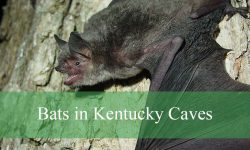Crickets are a diverse group of insects belonging to the order Orthoptera, known for their distinctive chirping sounds produced by rubbing their wings together.
In Maryland, several species of crickets are commonly found, each exhibiting unique characteristics and behaviors.
This guide provides detailed information on five notable cricket species in Maryland, including their physical appearance, habitat preferences, and seasonal activities.
Common Crickets Found in Maryland
Fall Field Cricket (Gryllus pennsylvanicus)

The Fall Field Cricket is a robust, medium-sized insect typically measuring 13–33 mm in length. Its body is a glossy dark brown to black, with long slender antennae that help it sense its surroundings. The wings are short and lie flat over the back, barely extending past the abdomen, and males possess specialized wing structures for producing their iconic chirping sounds. Their body shape is slightly flattened and strong, adapted for hopping and navigating through grass and leaf litter.
Behaviorally, Fall Field Crickets are nocturnal and produce a continuous, rhythmic chirping that can be used to estimate the temperature. They are omnivorous, feeding on a combination of plant material, small insects, and decaying organic matter. Males are territorial and will often engage in mild combat with other males to secure mating opportunities, while females tend to stay hidden and seek out the chirping males.
These crickets are most commonly found in fields, meadows, and the edges of wooded areas throughout Maryland. They are also occasionally seen near human habitation, especially in gardens, wood piles, and areas with tall grasses. Their distribution spans across much of the eastern United States, with a strong presence in temperate zones that provide both food and shelter.
Fall Field Crickets are primarily active during the warmer months, with peak activity in late summer and early fall. Evenings are the best time to observe them, as their chirping is most audible after sunset. During colder months, adults die off, leaving eggs in the soil to overwinter and hatch the following spring.
Camel Cricket (Rhaphidophoridae family)

Camel Crickets are distinguished by their humped, humpbacked bodies and extremely long, spindly legs. They range from 13–33 mm in length and have very long antennae, often longer than their body, which they use to navigate dark environments. Their coloration is usually light brown to dark brown, sometimes with mottled patterns that help them blend into damp, shadowy spaces. These insects are wingless and unable to produce chirping sounds, setting them apart from many other cricket species.
They are nocturnal and primarily detritivores, feeding on fungi, decaying organic matter, and occasionally small insects. Camel Crickets are capable of impressive jumps due to their long hind legs and are generally shy, avoiding light and human activity. They do not exhibit social behavior and are solitary foragers, remaining hidden during daylight hours.
Camel Crickets are most commonly found in cool, dark, and moist habitats such as basements, crawlspaces, and cellars. In the wild, they inhabit caves, under logs, and beneath stones where moisture is abundant. In Maryland, they are widely distributed in both urban and natural settings but are more noticeable indoors where they can become unwelcome guests.
While they are active year-round, Camel Crickets are most frequently observed indoors during the fall and winter months when they seek warmth. They tend to hide during the day and emerge at night to forage, often startling homeowners with sudden appearances in dark corners or basements.
Mole Cricket (Gryllotalpidae family)

Mole Crickets are large, stout insects, reaching lengths of up to 45 mm. They have cylindrical, velvety brown bodies with a yellowish underside and powerful, spade-like forelegs adapted for digging. Their heads are broad, with small eyes and long antennae that extend forward. Unlike other crickets, their wings are short and used less for sound production, as these crickets primarily live underground.
Behaviorally, Mole Crickets are expert burrowers, constructing extensive tunnel systems beneath lawns, gardens, and fields. They feed on plant roots, small insects, and decaying organic matter, and their burrowing can cause significant damage to turf and cultivated areas. Mole Crickets are mostly nocturnal, occasionally emerging above ground during warm nights to feed or search for mates.
They inhabit moist, sandy, or loamy soils, often in gardens, pastures, and other open grassy areas. In Maryland, Mole Crickets are found across the state, particularly in areas with well-drained, fertile soil. They are widespread across the eastern United States and are considered pests in agricultural settings due to their tunneling and feeding habits.
Mole Crickets are most active during the spring and summer months when the soil is warm. Observing them above ground is rare because they spend most of their time underground, but they may occasionally be seen at night after heavy rain or when searching for new burrow sites.
Tree Cricket (Oecanthus genus)

Tree Crickets are slender and delicate insects, typically 13–23 mm in length, with pale green to brown bodies that provide excellent camouflage among leaves and grasses. Their long, narrow wings extend beyond the abdomen, and their antennae are exceptionally long and thin. These crickets are characterized by their melodic, high-pitched chirps, which males use to attract females during the mating season.
Tree Crickets are nocturnal and omnivorous, feeding on plant tissues, nectar, and occasionally small insects. They exhibit minimal social behavior, with males producing continuous chirping while females search quietly through foliage for suitable mates. Their behavior is strongly tied to temperature and humidity, with singing increasing on warm, calm nights.
Tree Crickets are found in Maryland’s trees, shrubs, and tall grasses, often in forest edges, gardens, and areas with abundant foliage. Their distribution spans much of eastern and central North America, favoring temperate climates with sufficient vegetation for both food and shelter.
These crickets are most active during the warmer months, typically from late spring through early fall. Their high-pitched songs are most audible in the evenings and at night, making dusk the ideal time to observe them. During the day, they remain hidden among leaves and stems, avoiding predators and direct sunlight.
House Cricket (Acheta domesticus)

House Crickets are small, light brown insects, measuring 16–21 mm in length. They have three dark bands on their heads, long slender antennae, and a pair of cerci at the rear. Females possess a long, needle-like ovipositor for laying eggs. Their wings are long enough to cover the abdomen, and males produce a soft chirping sound to attract mates. The overall appearance is smooth and uniform in color, which helps them blend into indoor environments.
These crickets are nocturnal and omnivorous, feeding on plant material, crumbs, and small insects. They are social insects compared with other crickets, often gathering in groups near food sources. Males sing regularly to communicate and attract females, while females remain hidden to deposit eggs in warm, protected soil or damp substrates.
House Crickets are originally native to Asia but are now widely distributed worldwide due to human activity. In Maryland, they are commonly found in warm indoor areas, such as basements, kitchens, and greenhouses, and occasionally outdoors in sheltered locations. They thrive in environments that provide warmth, moisture, and access to food.
House Crickets are active year-round indoors, with peak activity occurring during the warmer months. Outdoors, they are most visible during late spring through early fall. They are predominantly nocturnal, making evenings and night-time the best periods for observation.
FAQs About Crickets in Maryland
What types of crickets are found in Maryland?
Maryland is home to several cricket species, including Fall Field Crickets (Gryllus pennsylvanicus), Camel Crickets (Rhaphidophoridae family), Mole Crickets (Gryllotalpidae family), Tree Crickets (Oecanthus genus), and House Crickets (Acheta domesticus). Each species has unique physical traits, behaviors, and habitats. Some are commonly found outdoors, while others, like Camel and House Crickets, often enter buildings in search of warmth and food.
How can I identify a cricket in my home or garden?
Crickets can be identified by their size, body shape, color, and chirping patterns. Fall Field Crickets are glossy dark brown or black with short wings, Camel Crickets are wingless with long legs and a humped back, Mole Crickets are large with powerful digging forelegs, Tree Crickets are slender and pale green with long narrow wings, and House Crickets are light brown with three dark bands on the head. Observing their chirping and activity patterns can also help in identification.
Are crickets harmful to humans or pets?
Most crickets in Maryland are harmless. They do not bite or transmit diseases to humans. However, Mole Crickets can damage lawns and gardens by feeding on roots, and House Crickets may damage fabrics or stored food in large numbers. Crickets can also become a nuisance indoors due to their persistent chirping.
When are crickets most active?
Crickets are generally nocturnal. Fall Field and Tree Crickets are most active during warm evenings from late spring through fall. Camel Crickets are active year-round, especially indoors during fall and winter. Mole Crickets are active in the soil during spring and summer, occasionally emerging at night. House Crickets are active year-round indoors, with peak activity in warmer months outdoors.
Where can I typically find each type of cricket?
Fall Field Crickets prefer fields, meadows, and garden edges. Camel Crickets inhabit basements, crawl spaces, and caves. Mole Crickets live in moist soil in lawns, gardens, and pastures. Tree Crickets are found in shrubs, trees, and tall grasses. House Crickets are commonly found indoors, including basements, kitchens, and greenhouses, and sometimes outdoors in sheltered areas.
How can I prevent crickets from entering my home?
To reduce indoor cricket activity, seal cracks and gaps in doors, windows, and foundations. Keep indoor areas dry and free of food debris. Reduce outdoor lighting at night, as it attracts insects, and maintain vegetation away from the house perimeter. Using screens and weatherstripping can also help keep crickets out.
Do crickets serve any ecological purpose?
Yes, crickets play an important role in the ecosystem. They help decompose plant material and organic matter, act as prey for birds, reptiles, and small mammals, and contribute to soil aeration, particularly species like Mole Crickets. Their presence indicates a healthy, balanced environment.






